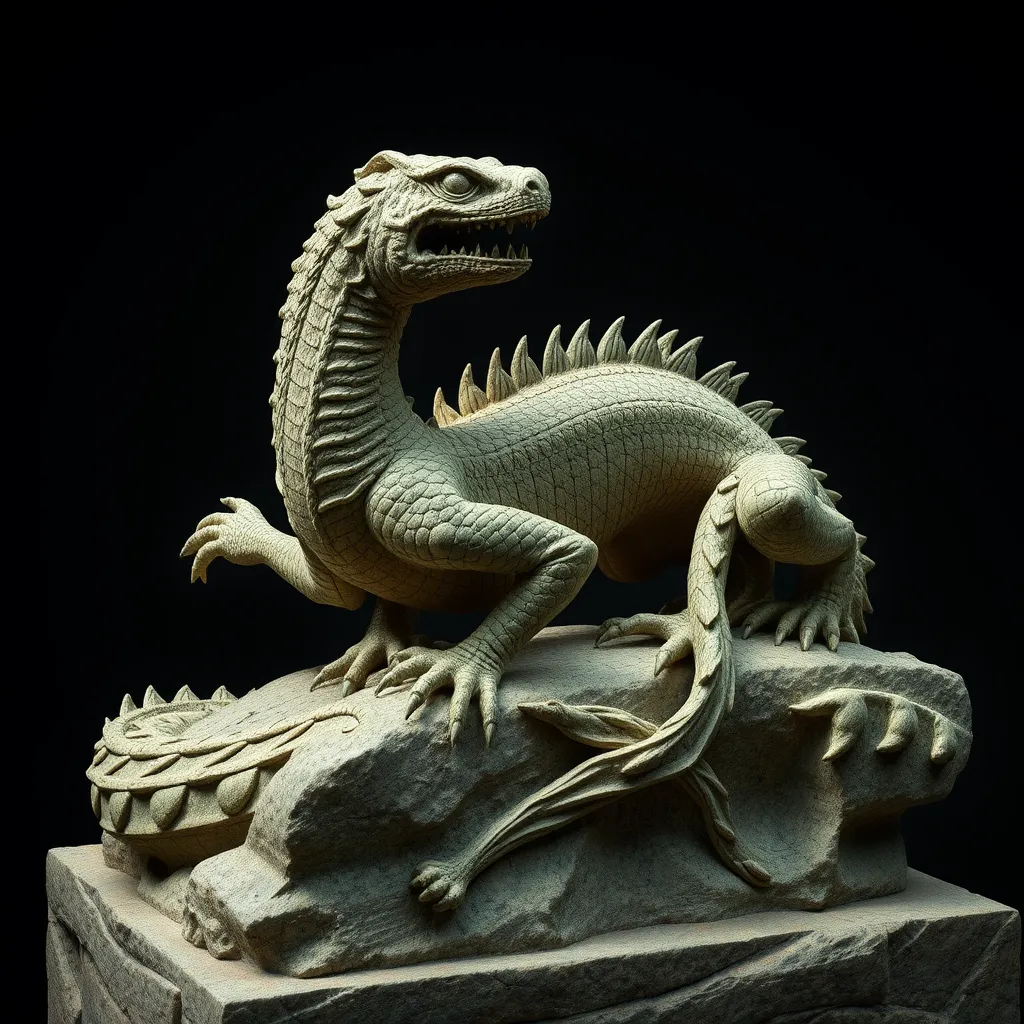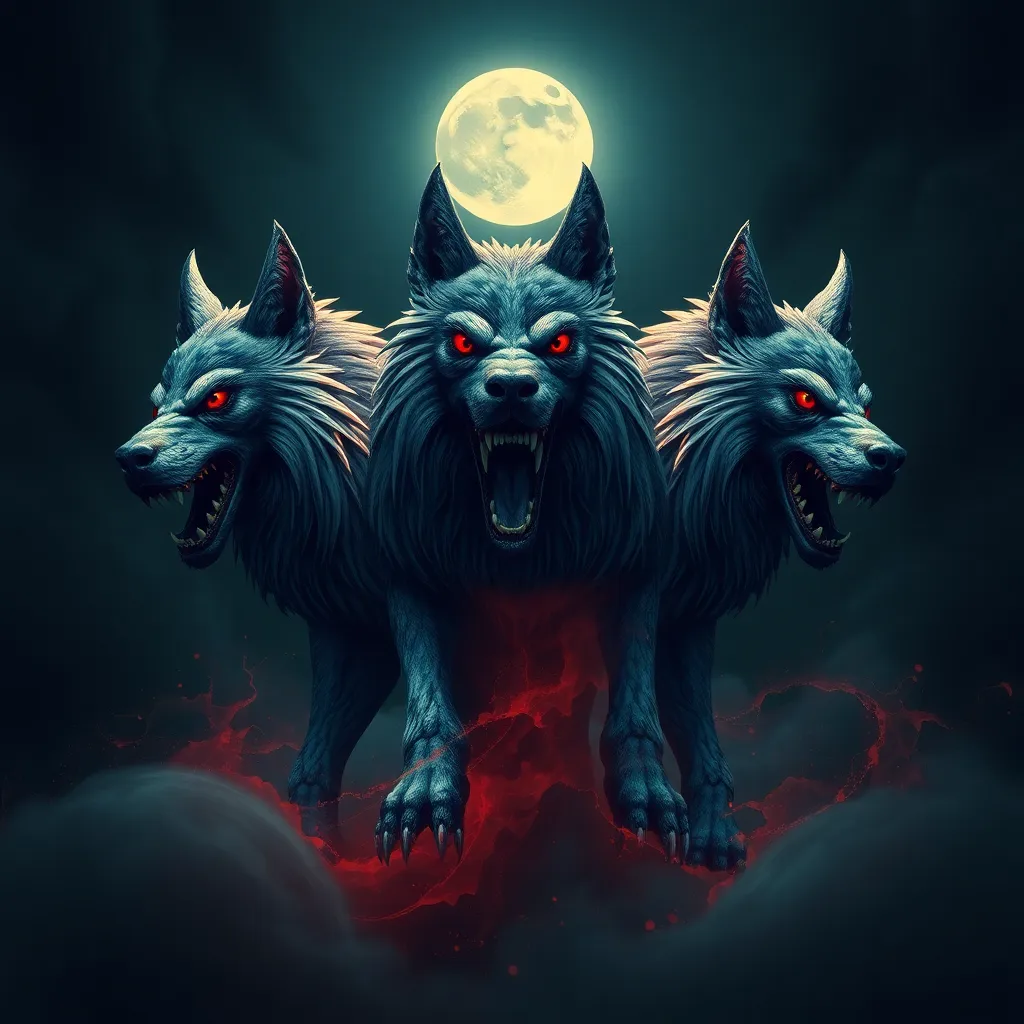The Basilisk in Medieval Sculpture: Analyzing the Monster’s Depiction in Stone and Wood
I. Introduction
The Basilisk, often referred to as the “king of serpents,” is a mythical creature that has captivated the imagination of many throughout history. This legendary beast, traditionally depicted as a serpent or dragon with lethal powers, holds a significant place in medieval culture and art. Its terrifying gaze, said to be capable of killing any living creature it meets, has made it a symbol of danger and death.
In medieval art, the Basilisk serves as both an object of fear and a subject of fascination. Artists and sculptors drew upon its rich tapestry of symbolism to convey moral lessons and cultural beliefs. This article aims to explore the various dimensions of the Basilisk as depicted in medieval sculpture, examining its historical context, characteristics, artistic techniques, and enduring legacy.
II. Historical Context of the Basilisk
The origins of the Basilisk can be traced back to ancient texts and folklore, where it emerged as a creature of dread and awe. Its earliest mentions appear in Greek and Roman literature, where it was often described as a snake or lizard with a crown-like crest. The Basilisk was believed to be born from the egg of a rooster and was said to be capable of inflicting death with its mere gaze.
During the medieval period, the Basilisk’s portrayal evolved significantly. Bestiaries—compendiums of animals, both real and mythical—became popular, and the Basilisk found a prominent place within their pages. These texts not only provided descriptions of the creature but also embedded moral and religious symbolism into their narratives, linking the Basilisk with the themes of sin and divine punishment.
Culturally, the Basilisk became a symbol of evil and danger, often associated with the devil and heresy. Its fearsome reputation was further solidified by its inclusion in various legends and folklore, where it represented the dangers lurking in the unknown.
III. Characteristics of the Basilisk
The Basilisk is often characterized by its unique physical attributes. It is typically depicted as a serpent-like creature with a crest, large eyes, and sometimes, wings. Medieval artists took creative liberties in their representations, leading to various interpretations of the Basilisk. Common features include:
- Long, sinuous body
- Fearsome head with piercing eyes
- Scales and claws resembling those of a dragon
- A crown-like crest, symbolizing its regality
Symbolically, the Basilisk represents death and danger, embodying the fears of the medieval populace. It serves as a reminder of the consequences of sin and the ever-present threat of evil. When compared to other mythical creatures, such as the griffin or unicorn, the Basilisk stands out due to its association with mortality and destruction.
IV. Techniques and Materials Used in Sculpture
In medieval sculpture, artists commonly used materials such as stone and wood to create their works. Stone, particularly limestone and marble, was favored for its durability and ability to capture intricate details. Wood, on the other hand, allowed for more flexibility in carving and was often used for smaller sculptures.
The techniques employed by sculptors to depict the Basilisk varied, with many artists favoring relief carving for architectural applications. Some key techniques included:
- Chiseling: Carving out the details of the Basilisk from stone or wood.
- Polychromy: Applying paint to sculptures to enhance their visual impact.
- Relief work: Creating three-dimensional representations that protrude from a flat surface.
However, sculptors faced challenges in representing the Basilisk’s unique features, particularly its gaze and deadly aura. Capturing the essence of fear and fascination while adhering to the stylistic conventions of the time required skill and creativity.
V. Notable Examples of Basilisk Sculpture
Throughout medieval Europe, numerous notable sculptures featuring the Basilisk can be found. These works often appeared in both architectural settings and public spaces. Examples include:
A. Architectural Carvings in Cathedrals
Many cathedrals featured elaborate stone carvings of the Basilisk as part of their decorative schemes. These sculptures served both an aesthetic and didactic purpose, reminding viewers of the dangers of sin and the need for vigilance against evil.
B. Freestanding Sculptures in Public Spaces
In addition to architectural applications, freestanding sculptures of the Basilisk were also created for public display. These works often conveyed a sense of foreboding, serving as warnings to passersby.
Regional variations in the depiction of the Basilisk can be seen, with Northern European representations often emphasizing its reptilian features, while Southern European works may focus on its regal and monstrous attributes.
VI. Interpretation and Symbolism in Artistic Depictions
The Basilisk’s role in medieval art extends beyond mere representation; it serves as a cautionary symbol within the context of morality. Artists utilized the creature to convey warnings about the perils of sin and the consequences of straying from the path of righteousness.
Religious connotations are also prevalent, with the Basilisk often linked to themes of temptation and the devil. Its lethal gaze symbolizes the seductive nature of sin, drawing individuals toward destruction.
The interplay between fear and fascination in artistic representation is a recurring theme. While the Basilisk evokes terror, it also captures the imagination, reflecting the complexities of medieval beliefs about the supernatural.
VII. The Basilisk’s Legacy in Art and Culture
The influence of medieval depictions of the Basilisk can be seen in later artistic movements, including the Renaissance and Baroque periods, where the creature’s fearsome qualities were reinterpreted in new contexts.
In contemporary culture, the Basilisk continues to inspire adaptations in literature, film, and art, reflecting an ongoing fascination with this mythical creature. Its legacy endures as a symbol of danger and the unknown, reminding us of the perennial human struggle with fear and morality.
VIII. Conclusion
In summary, the Basilisk holds a significant place in medieval sculpture, embodying themes of danger, sin, and morality. Its enduring legacy in art and mythology speaks to the complexities of human emotion and the cultural narratives that shape our understanding of the world.
As we reflect on the Basilisk’s portrayal, it becomes clear that further research and exploration of medieval monsters in sculpture is essential. These creatures not only enrich our understanding of medieval beliefs but also provide insight into the timeless human experience of grappling with fear and the unknown.




